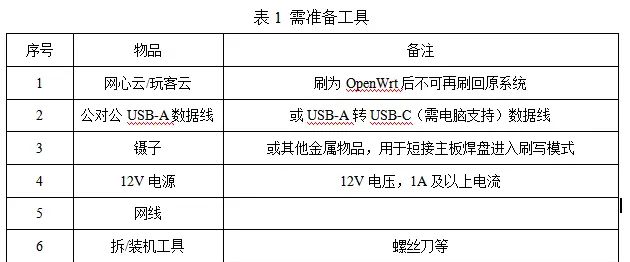1. reduce() 函数基础
reduce() 函数用于对序列中的元素进行累积操作,接收一个函数和一个序列作为参数,返回一个单一的累积结果。
基本语法:
from functools import reduce reduce(function, sequence[, initial])
简单示例:
# 从 functools 模块中引入 reduce 函数,用于对可迭代对象中的元素进行累积操作
from functools import reduce
# 定义一个列表,包含数字 1 到 5
numbers = [1, 2, 3, 4, 5]
# 运用 reduce 函数结合 lambda 表达式计算列表中所有元素的乘积
# lambda 表达式定义了两个参数 x 和 y,返回它们的乘积
product = reduce(lambda x, y: x * y, numbers)
# 打印计算得到的乘积
print(product)
# 预期输出结果为 120
# 定义一个函数 multiply,用于返回两个参数的乘积
def multiply(x, y):
return x * y
# 利用 reduce 函数和 multiply 函数计算 5 的阶乘
# range(1, 6) 生成一个从 1 到 5 的整数序列
factorial_5 = reduce(multiply, range(1, 6))
# 打印计算得到的 5 的阶乘
print(factorial_5)
# 预期输出结果为 120
2. operator 模块
operator 模块提供了 Python 内置运算符的函数版本,使得函数式编程更加方便。
常用运算符函数:
# 导入 operator 模块,该模块提供了一系列用于执行各种运算的函数
import operator
# 以下为算术运算的演示
# 运用 operator.add 函数计算两数之和,此处计算 2 与 3 的和
print(operator.add(2, 3)) # 输出结果为 5
# 利用 operator.sub 函数计算两数之差,这里是 5 减去 2 的差
print(operator.sub(5, 2)) # 输出结果为 3
# 借助 operator.mul 函数计算两数之积,即 4 与 3 的乘积
print(operator.mul(4, 3)) # 输出结果为 12
# 使用 operator.truediv 函数进行真除法运算,计算 6 除以 2 的商
print(operator.truediv(6, 2)) # 输出结果为 3.0
# 以下是比较运算的展示
# 采用 operator.eq 函数判断两数是否相等,判断 5 和 5 是否相等
print(operator.eq(5, 5)) # 输出结果为 True
# 运用 operator.gt 函数判断前者是否大于后者,判断 5 是否大于 3
print(operator.gt(5, 3)) # 输出结果为 True
# 利用 operator.lt 函数判断前者是否小于后者,判断 2 是否小于 4
print(operator.lt(2, 4)) # 输出结果为 True
# 以下为逻辑运算的示例
# 运用 operator.and_ 函数执行逻辑与运算,对 True 和 False 进行逻辑与操作
print(operator.and_(True, False)) # 输出结果为 False
# 利用 operator.or_ 函数执行逻辑或运算,对 True 和 False 进行逻辑或操作
print(operator.or_(True, False)) # 输出结果为 True
# 使用 operator.xor 函数执行逻辑异或运算,对 True 和 False 进行逻辑异或操作
print(operator.xor(True, False)) # 输出结果为 True
# 以下是位运算的演示
# 运用 operator.and_ 函数进行按位与运算,对 5(二进制 101)和 3(二进制 011)进行按位与操作
print(operator.and_(5, 3)) # 输出结果为 1(二进制 101 & 011 = 001)
# 利用 operator.or_ 函数进行按位或运算,对 5(二进制 101)和 3(二进制 011)进行按位或操作
print(operator.or_(5, 3)) # 输出结果为 7(二进制 101 | 011 = 111)
# 使用 operator.xor 函数进行按位异或运算,对 5(二进制 101)和 3(二进制 011)进行按位异或操作
print(operator.xor(5, 3)) # 输出结果为 6(二进制 101 ^ 011 = 110)
3. reduce() 与 operator 结合使用
实际应用示例:
# 从 functools 模块导入 reduce 函数,它能对可迭代对象元素进行累积操作
# 从 operator 模块导入常用的操作符函数
from functools import reduce
import operator
# 1. 计算列表中所有元素的总和
# 定义一个包含数字 1 到 5 的列表
numbers = [1, 2, 3, 4, 5]
# 利用 reduce 函数结合 operator.add 函数计算列表元素总和
total = reduce(operator.add, numbers)
# 打印计算得到的总和
print(f"总和: {total}")
# 预期输出结果为 15
# 2. 计算列表中所有元素的乘积
# 使用 reduce 函数结合 operator.mul 函数计算列表元素乘积
product = reduce(operator.mul, numbers)
# 打印计算得到的乘积
print(f"乘积: {product}")
# 预期输出结果为 120
# 3. 实现字符串的连接
# 定义一个包含多个字符串的列表
words = ['Hello', 'World', 'Python']
# 运用 reduce 函数结合 operator.add 函数将列表中的字符串连接成一个句子
sentence = reduce(operator.add, words)
# 打印连接后的句子
print(f"句子: {sentence}")
# 预期输出结果为 HelloWorldPython
# 4. 完成列表的合并操作
# 定义一个包含多个子列表的列表
lists = [[1, 2], [3, 4], [5, 6]]
# 利用 reduce 函数结合 operator.add 函数将多个子列表合并成一个列表
merged = reduce(operator.add, lists)
# 打印合并后的列表
print(f"合并列表: {merged}")
# 预期输出结果为 [1, 2, 3, 4, 5, 6]
# 5. 找出列表中的最大值
# 使用 reduce 函数结合 lambda 表达式找出列表中的最大值
max_value = reduce(lambda x, y: x if x > y else y, numbers)
# 打印列表中的最大值
print(f"最大值: {max_value}")
# 预期输出结果为 5
4. 带初始值的 reduce()
# 从 functools 模块引入 reduce 函数,此函数可对可迭代对象元素进行累积操作
# 从 operator 模块引入各类操作符函数
from functools import reduce
import operator
# 定义一个包含数字 1 至 5 的列表
numbers = [1, 2, 3, 4, 5]
# 进行带初始值的累加操作
# 利用 reduce 函数结合 operator.add 函数,以 10 作为初始值对列表元素进行累加
total_with_initial = reduce(operator.add, numbers, 10)
# 打印带初始值累加后的总和
print(f"带初始值的总和: {total_with_initial}")
# 预期输出为 25
# 执行带前缀的字符串连接操作
# 定义一个包含字符串 'World' 和 'Python' 的列表
words = ['World', 'Python']
# 运用 reduce 函数结合 operator.add 函数,以 'Hello ' 作为前缀对列表中的字符串进行连接
greeting = reduce(operator.add, words, 'Hello ')
# 打印连接后的问候语
print(f"问候语: {greeting}")
# 预期输出为 Hello WorldPython
5. 解决 XOR 问题的完整示例
# 从 functools 模块导入 reduce 函数,用于对可迭代对象进行累积操作
# 从 operator 模块导入操作符函数,这里主要使用异或操作符
from functools import reduce
import operator
def reduce_xor(nums):
"""
此函数的功能是计算列表中所有元素的异或值。
参数:
nums (list): 一个包含整数的列表。
返回:
int: 列表中所有元素进行异或运算后的结果。
"""
return reduce(operator.xor, nums)
# 定义一系列测试用例,用于验证 reduce_xor 函数的正确性
test_cases = [
[1, 2, 3, 4, 5],
[7, 3, 5, 2],
[10, 10], # 由于一样数字进行异或运算结果为 0
[1, 1, 2, 2, 3, 3], # 成对出现的数字异或后结果为 0
[5] # 仅包含单个元素的列表
]
# 遍历每个测试用例,调用 reduce_xor 函数计算结果并打印
for i, nums in enumerate(test_cases):
result = reduce_xor(nums)
print(f"测试 {i + 1}: {nums} -> {result}")
# 手动实现异或运算的函数,用于验证 reduce_xor 函数的结果
def manual_xor(nums):
result = 0
for num in nums:
result ^= num
return result
# 选取一个测试列表,分别使用 reduce_xor 函数和手动实现的函数计算异或结果
test_nums = [1, 2, 3, 4, 5]
print(f"reduce 方法: {reduce_xor(test_nums)}")
print(f"手动方法: {manual_xor(test_nums)}")
6. 性能比较
# 从 functools 模块引入 reduce 函数,用于对可迭代对象元素进行累积操作
# 从 operator 模块引入操作符函数,这里使用加法操作符
# 引入 time 模块,用于记录程序运行时间
from functools import reduce
import operator
import time
# 进行大数据量测试
# 生成一个包含从 1 到 999999 的整数的大列表
large_list = list(range(1, 1000000))
# 采用 reduce + operator 方法计算列表元素总和
# 记录开始时间
start_time = time.time()
# 利用 reduce 函数结合 operator.add 函数计算列表元素总和
result1 = reduce(operator.add, large_list)
# 计算该方法的运行耗时
time1 = time.time() - start_time
# 运用内置 sum 函数计算列表元素总和
# 记录开始时间
start_time = time.time()
# 使用 sum 函数计算列表元素总和
result2 = sum(large_list)
# 计算该函数的运行耗时
time2 = time.time() - start_time
# 打印两种方法的耗时情况
print(f"reduce + operator 耗时: {time1:.4f} 秒")
print(f"sum 函数耗时: {time2:.4f} 秒")
# 验证两种方法计算结果是否一样
print(f"结果一样: {result1 == result2}")
7. 实用技巧和注意事项
空序列处理:
# 从 functools 模块导入 reduce 函数,用于对可迭代对象元素进行累积操作
# 从 operator 模块导入操作符函数,这里使用加法操作符
from functools import reduce
import operator
# 处理空序列时,需要为 reduce 函数提供初始值
# 定义一个空列表
empty_list = []
try:
# 尝试对空列表使用 reduce 函数结合 operator.add 进行累加操作
result = reduce(operator.add, empty_list)
except TypeError as e:
# 若出现类型错误(由于空列表使用 reduce 无初始值会报错),打印错误信息
print(f"错误: {e}")
# 采用安全的方式处理空列表
# 为 reduce 函数提供初始值 0 进行累加操作
safe_result = reduce(operator.add, empty_list, 0)
# 打印空列表安全处理后的结果
print(f"空列表安全处理: {safe_result}")
# 预期输出为 0
复杂操作:
# 从 functools 模块引入 reduce 函数,其能够对可迭代对象的元素进行累积操作
from functools import reduce
# 执行复杂累积操作:计算加权平均值
# 定义一个包含元组的列表,每个元组代表分数及其对应的权重
data = [(85, 3), (90, 2), (78, 4)]
def weighted_avg_accumulator(acc, item):
"""
此函数用于在计算加权平均值的过程中进行累积操作。
参数:
acc (tuple): 累积结果,包含当前的总分数和总权重,格式为 (total_score, total_weight)。
item (tuple): 当前要处理的数据项,包含分数和对应的权重,格式为 (score, weight)。
返回:
tuple: 更新后的累积结果,格式为 (total_score + score * weight, total_weight + weight)。
"""
# 解包累积结果,获取当前总分数和总权重
total_score, total_weight = acc
# 解包当前数据项,获取分数和权重
score, weight = item
# 计算更新后的总分数和总权重
return (total_score + score * weight, total_weight + weight)
# 利用 reduce 函数结合加权平均累积函数,以 (0, 0) 作为初始值进行累积操作
total_score, total_weight = reduce(weighted_avg_accumulator, data, (0, 0))
# 计算加权平均值
weighted_avg = total_score / total_weight
# 打印计算得到的加权平均值,保留两位小数
print(f"加权平均值: {weighted_avg:.2f}")
总结

- reduce() 是一个强劲的函数式编程工具,用于序列的累积计算
- operator 模块提供了运算符的函数版本,使代码更简洁
- 两者结合可以写出既简洁又高效的代码
- 在处理空序列时,提议提供初始值避免错误
- 对于简单操作,使用内置函数(如 sum())一般性能更好
© 版权声明
文章版权归作者所有,未经允许请勿转载。如内容涉嫌侵权,请在本页底部进入<联系我们>进行举报投诉!
THE END

























暂无评论内容